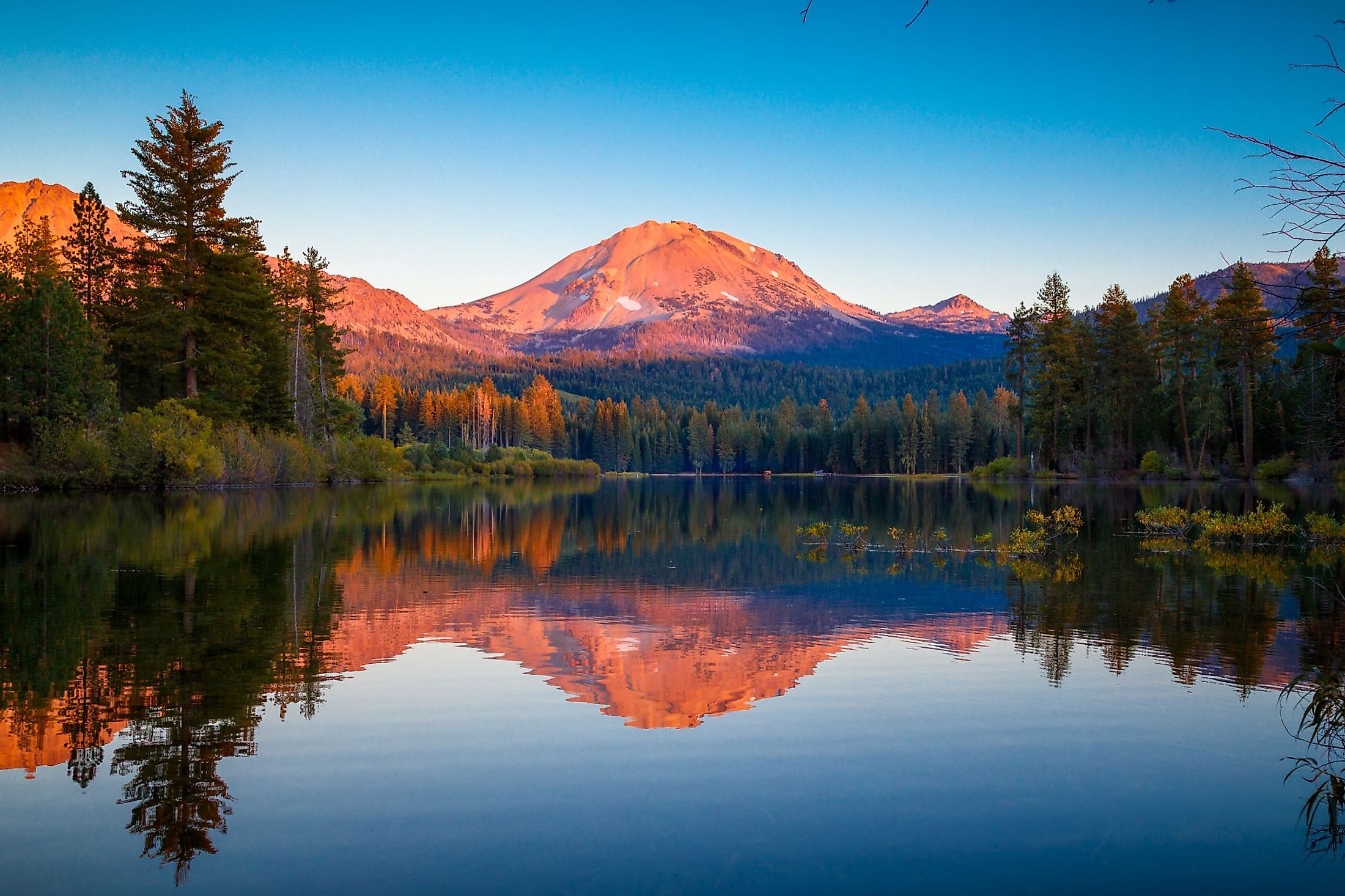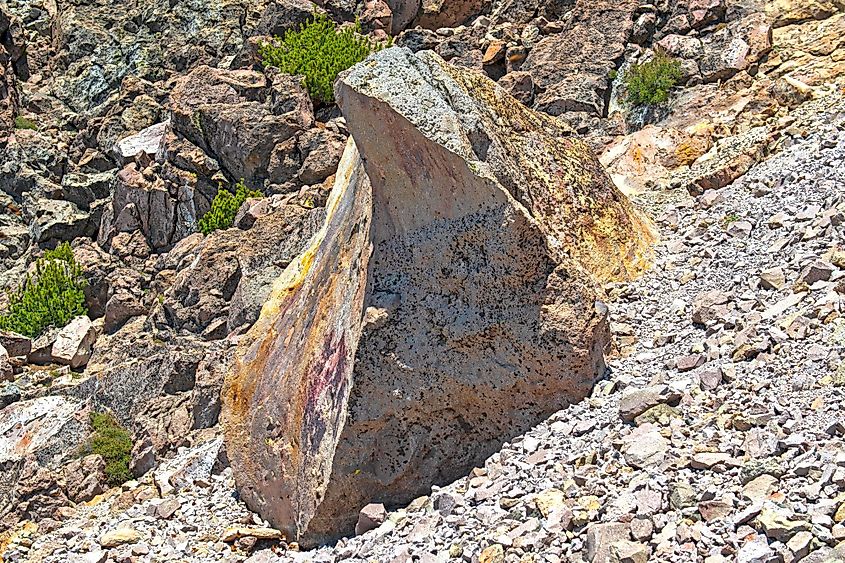
Lassen Peak
In Lassen Volcanic National Park stands Lassen Peak, which is one of seven active volcanoes in California. The volcano last erupted more than 100 years ago, and today it is rated very high on the potential threat scale. What appears as a snow-capped mountain for much of the year, Lassen Peak is a very popular destination for thrill-seekers, hikers, and cyclists. Despite the uncertainty of when or if Lassen will erupt once again, the national park still brings in approximately 500,000 tourists each year.
Geography Of Lassen Peak

Rising beyond the clouds at 3,187 meters above sea level, Lassen Peak is the most southern active volcano in the Cascade Mountain Range. Adventurers on the 4,265 km long Pacific Coast trail can bypass the scenic views of Lassen Peak. 84 km from Redding, the short commute makes this area reachable. In the summer months, the Volcanic Legacy Scenic Byway opens for local traffic to access many picnic spots, lakes, and hiking trails. 179 km east of the peak is the Nevada State border and 245 km north is the boundary with the state of Oregon. Lassen Volcano National Park stretches across the landscape, occupying 430.47 sq. km in northwestern California.
History Of Lassen Peak

Lassen Volcanic Center has been active for over 825,000 years in different time segments. These volcanic events occurred in an area of 518 sq. km, which resulted in producing many types of volcanoes. During those years, there have been hundreds of explosive eruptions and effusive eruptions that created lava domes north of the crater. Lassen Peak laid silent for a course of 27,000 years until an eruption in 1914. This triggered magma to rise to the surface, which caused adjacent lakes and groundwater to explode from the build-up of steam. A second blast occurred the following year, which opened a new crater in the volcano. It sent out a massive amount of water that flooded the surrounding ranches and destroyed forests in its path. A few days later, Lassen exploded again, sending a mushroom cloud that rose over 9,000 into the atmosphere. The discharge of volcanic material devastated an area of 7.8 sq. km, while small eruptions continued until 1917, and there hasn't been an eruption since.
Climate Of Lassen Peak

Lassen Peak has a high alpine climate, and snow can rest on the peak from October to June. Autumn is an excellent time because temperatures tend to be cooler, with highs of 21˚C and lows of -5˚C. Snowfall begins in October, and temperatures continue to plummet. Winter lows hover around -4˚C, and highs reach around 5˚C; the snowiest month is March, with 13 snowy days. The intense snowfall at such high elevations creates snowdrifts higher than 9 meters. Spring weather warms up to highs of 20˚C and initiates the snowy mountains to thaw. Late spring months become drier with single digits of rainy days per month. High temperatures will soar over 28˚C, and minimal precipitation will fall. Of course, it will always be cooler at the top of the volcano.
Geology Of Lassen Peak

Lassen Peak might seem like a stratovolcano, but it is a massive lava dome. Volcanic activity in the park is thanks to the Juan de Fuca oceanic plate. The region sits on the edge of the “ring of fire” that surrounds the entire Pacific Ocean. All over the mountain, geothermal activity is present in bubbling mud volcanoes and steamy hot springs. Each rock inside Lassen Volcano National Park is volcanic material; other types of volcanoes found in the area include shield volcanoes, stratovolcanoes, cinder cones, and lava domes. It is the only national park to protect these four major volcanic types, and 23 volcanoes have sprouted throughout the center.
Ecology Of Lassen Peak
The increasing elevations play a big part in the changing of diverse ecological environments on the mountain. Roughly 300 species of mammals, birds, reptiles, amphibians, and fish live throughout the various ecosystems. The base of Lassen is full of thick forests that house many species of pines and wildflowers. Moving higher up in elevation, woodpeckers, grouse, martens, and hares inhabit areas higher than 1900 meters. Birds of prey, finches, and small mammals patrol the subalpine whitebark pine at heights above 2400 meters. The changing of seasons in each bionetwork is a wonder of its own.











